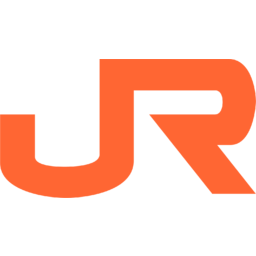
P/E ratio for Central Japan Railway (9022.T)
P/E ratio as of June 2025 (TTM): 594
According to Central Japan Railway's latest financial reports and stock price the company's current price-to-earnings ratio (TTM) is 593.516. At the end of 2024 the company had a P/E ratio of 9.43.
P/E ratio history for Central Japan Railway from 2009 to 2023
PE ratio at the end of each year
| Year | P/E ratio | Change |
|---|---|---|
| 2024 | 9.43 | -33.42% |
| 2023 | 14.2 | -123% |
| 2022 | -61.6 | 269.2% |
| 2021 | -16.7 | -289.23% |
| 2020 | 8.81 | -24.62% |
| 2019 | 11.7 | 17.07% |
| 2018 | 9.99 | 9.71% |
| 2017 | 9.10 | -22.94% |
| 2016 | 11.8 | -31.05% |
| 2015 | 17.1 | 85.5% |
| 2014 | 9.24 | -0.26% |
| 2013 | 9.26 | -8.38% |
| 2012 | 10.1 | 4.13% |
| 2011 | 9.71 | -35.96% |
| 2010 | 15.2 | 68.49% |
| 2009 | 9.00 | -29.84% |
| 2008 | 12.8 | -47.79% |
| 2007 | 24.6 | -10.9% |
| 2006 | 27.6 | 29.96% |
| 2005 | 21.2 |
P/E ratio for similar companies or competitors
| Company | P/E ratio | P/E ratio differencediff. | Country |
|---|---|---|---|
 West Japan Railway 9021.T | 20.3 | -96.57% | 🇯🇵 Japan |
 East Japan Railway 9020.T | -13.9 | -102.33% | 🇯🇵 Japan |
How to read a P/E ratio?
The Price/Earnings ratio measures the relationship between a company's stock price and its earnings per share. A low but positive P/E ratio stands for a company that is generating high earnings compared to its current valuation and might be undervalued. A company with a high negative (near 0) P/E ratio stands for a company that is generating heavy losses compared to its current valuation.
Companies with a P/E ratio over 30 or a negative one are generaly seen as "growth stocks" meaning that investors typically expect the company to grow or to become profitable in the future.
Companies with a positive P/E ratio bellow 10 are generally seen as "value stocks" meaning that the company is already very profitable and unlikely to strong growth in the future.